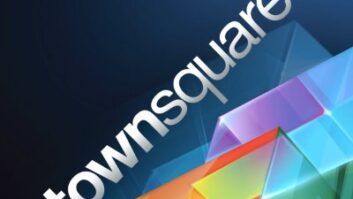If only you could defeat the high-tech security perimeter and gain access to the otherwise impenetrable Cole’s Law Compound, you could see the Dell® computer on which this is being typed, the Washington Redskins® poster above some Office Depot® banker’s boxes next to a Hewlett-Packard® printer, a Beatles® mouse pad, a Mosrite® guitar switch plate or any number of other readily identifiable commercial products.
But could you read that last sentence on the air? And if you did, would you have to worry about sponsorship IDs?
This is not an idle question.
The Federal Communications Commission has released a Notice of Inquiry and Notice of Proposed Rule Making (NOI/NPRM) in which it expresses concern about the practice of “embedded advertising,” and its two primary components, “product placement” and “product integration,” in current programming, particularly as those practices implicate the sponsorship identification rules.
Although the NOI/NPRM is less than clear about what actions the FCC might possibly take in this area, it’s safe to say that the commission is thinking about taking steps to rein in embedded advertising.
Consideration
Let’s start with the basics.
Section 317 of the Communications Act requires each broadcaster specifically to identify, on air, any programming material for the broadcast of which “valuable consideration” — meaning any money, goods, favors or anything else that’s worth anything — has been provided or promised to the station.
The statute also requires the licensee to “exercise reasonable diligence” to determine whether any consideration has changed hands in connection with the production of the program before it gets to the station. And Section 508 requires non-licensee folks involved in program production to disclose receipt of such consideration either to their employers or to broadcasters airing the program.
The sponsorship ID rule was not aimed at obvious spots, such as your standard McDonalds spot, which essentially identifies itself.
The rule entered the law in the early 1960s, largely in response to the payola and quiz show scandals of the late 1950s. In the former, disc jockeys were found to have been taking money on the side to promote certain records on the air. In the latter, it turned out that money had changed hands during the production of some quiz programs, as a result of which certain products or companies got themselves mentioned repeatedly on air.
Worried that over-the-air ads arising from under-the-table deals might somehow dupe a guileless and unsuspecting public, Congress imposed the sponsorship ID requirement (which the FCC then dutifully included in Section 73.1212 of its rules).
Generally speaking, there appears to have been little problem with undisclosed sponsorship since the rule was first imposed almost 50 years ago.
Periodically one would hear stories — possibly accurate, possibly apocryphal — of questionable record company promotional practices, and more recently the commission (at the prodding of a couple of “public interest” organizations) has questioned the use of “video news releases” on the TV side.
But by and large, sponsorship identification has not been a matter of particular urgency for years.
But the FCC seems to think that that has now changed.
Placement
The new concern arises from the practices of “product placement” (which involves the mere use of commercial products as props) and “product integration” (which entails the inclusion of such products in the dialogue and/or plot of a program).
Various trade press sources have reported that, with the increased use of digital video recording devices, television audiences in particular are affirmatively skipping traditional commercial breaks; accordingly, advertisers, with the cooperation of program producers, have gravitated toward embedding techniques to assure access to the audience.
The FCC is concerned that such embedding, when combined with established sponsorship identification techniques, may not adequately inform the public of the nature — or even the fact — of the embedded advertising. Hence the NOI/NPRM.
The NOI/NPRM is short on detail. While the impetus clearly derives from the video side of the universe, the NOI/NPRM expressly includes the radio industry within its scope.
So when the commission suggests that it might require “concurrent” IDs — that would mean the sponsorship ID would have to air simultaneously with the reference to or depiction of the sponsor’s product — the commission asks whether such concurrent IDs would be “more or less disruptive to radio broadcasters.”
It also asks whether sponsorship IDs on radio should be of a “certain duration” or a “certain volume.”
The NOI/NPRM also asks whether it should be presumed that some tit-for-tat exchange has occurred (and, therefore, that a sponsorship ID is required) when a radio host provides a personal, on-air endorsement for goods or services that may have been provided at little or no cost.
On that last point, the commission wonders whether such endorsements should be treated differently if they are “made to sound like they are part of a radio host’s on-air banter rather than an advertisement.”
Complication
Sponsorship ID on radio is probably only a peripheral concern of the commission, even though the NOI/NPRM is clearly targeted to both TV and radio.
But the imposition of some form of “concurrent ID” requirement could complicate things for radio far more than for TV.
After all, on TV the licensee can run a crawl or insert a “pop-up video”-style identifier that, while intrusive and distracting, would still permit the essential program to continue.
On radio, by contrast, an audio ID would have to be imposed over the program audio, which would at least interrupt the program, if not make it difficult to comprehend. It is not clear how such a new requirement could be said to serve the public.
The commission has demonstrated an overheated interest in “sponsorship identification” for the last several years — recall the multiple VNR inquiries, as the most obvious example. The NOI/NPRM is in line with that interest, but it extends it in a way which could have a serious adverse impact on broadcast operations.
Radio licensees in particular should be concerned that perceived problems on the TV side may lead to significantly burdensome, and unnecessary, new obligations on the radio side.
One might also ask what purpose would be served by such a requirement?
While the NOI/NPRM invokes the “public’s right to know who is paying,” the NOI/NPRM does not dwell on the questions of whether the public is perhaps smart enough to realize that a disc jockey lavishing plaudits on a product might not be entirely altruistic.
At bottom, the commission appears to assume that there is in fact some overriding public interest in requiring sponsorship identification — but the commission fails to explore exactly what that public interest might be.
Increased regulation of embedded advertising inevitably will draw the commission even more deeply into content regulation than it has previously ventured — and, as a result, the commission will be drawn even closer to obvious First Amendment issues that should not, cannot, be resolved by broad platitudinous references to “the public’s right to know.”
Ideally, the commission will in the end seek to avoid the treacherous constitutional waters toward which it has set sail. But if it does not, the substantial burdens on broadcasters that would likely flow from increased sponsorship ID requirements, combined with the substantial content regulation that would necessarily accompany such requirements, ultimately will require far greater justification than the commission has thus far demonstrated.
The comment and reply comment deadlines for the NOI/NPRM have not yet been established. Check our blog at www.commlawblog.com for updated information, which will be posted when available.
Radio World welcomes other points of view to [email protected].












